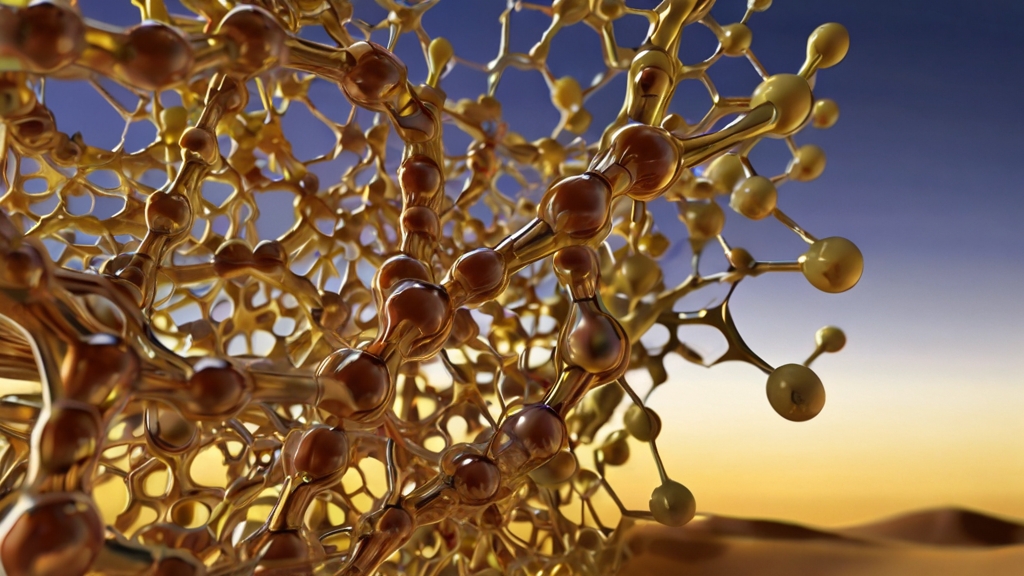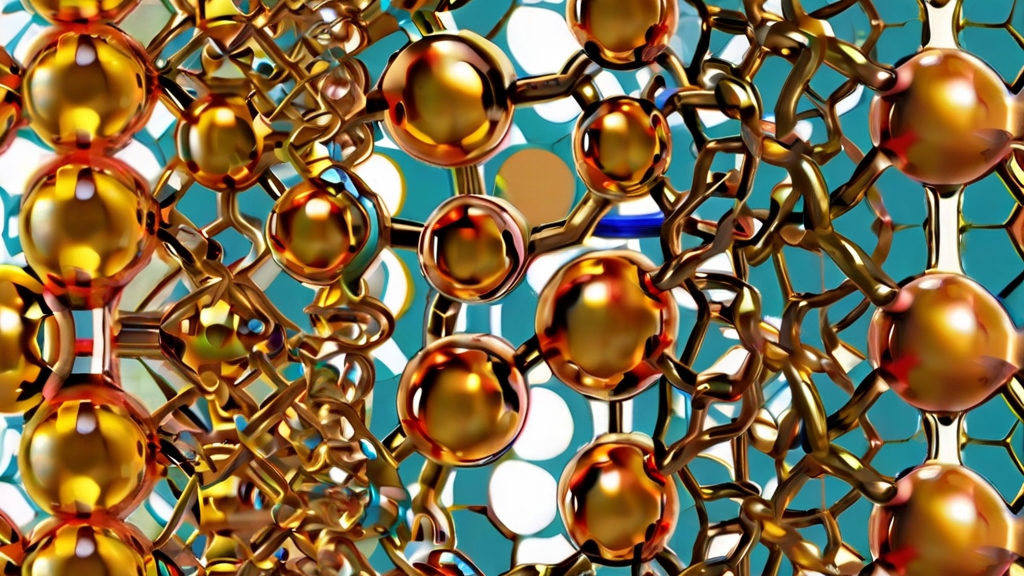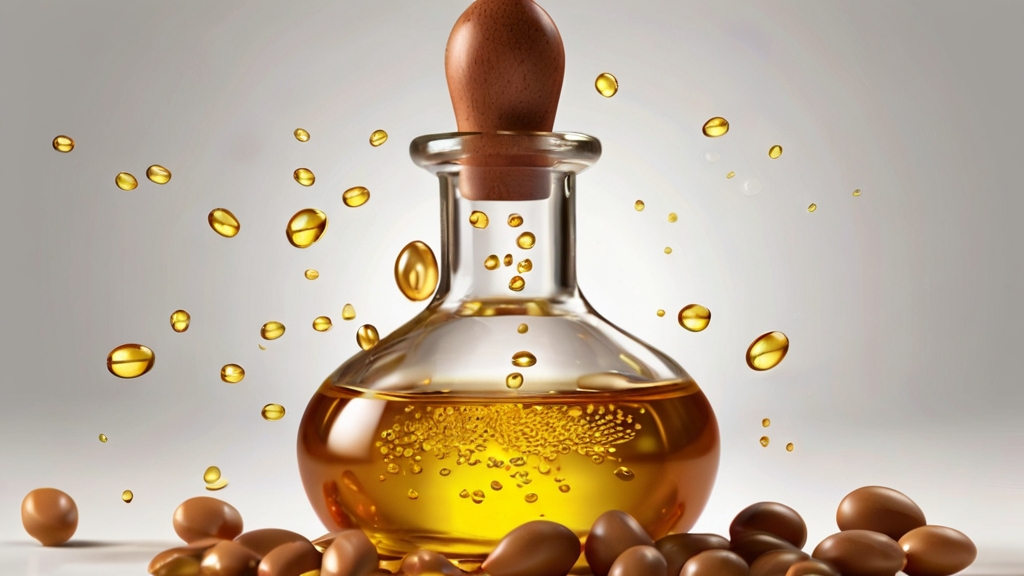
Amira Benhima
A passionate advocate for holistic wellness and natural beauty, is an accomplished author specializing in the benefits and uses of Argan oil, with years of experience exploring its wonders.
Key Takeaways
When it comes to fatty acid breakdown in Argan oil, you’ll discover a world of fascinating information. From the importance of fatty acids in determining the quality and authenticity of the oil to the various types found within it, the topic is both intriguing and significant. But what really makes it captivating is the impact of geographic origin on the fatty acid profile, allowing for differentiation and classification. And that’s just the beginning. So, if you’re ready to unlock the secrets behind Argan oil’s chemical composition and health benefits, prepare to be amazed.
- Argan oil is rich in oleic acid and linoleic acid, which provide numerous health benefits.
- The fatty acids in argan oil support heart health, lower blood pressure, and have anti-inflammatory properties.
- Proper storage in dark, airtight containers is essential for preserving the fatty acid composition of argan oil.
- Choosing argan oil with high oleic acid levels and a balanced composition ensures optimal health and skincare benefits.
Importance of Fatty Acids in Argan Oil

The importance of fatty acids in argan oil cannot be overstated, as they play a crucial role in its nutritional value and health benefits. Argan oil is rich in two primary fatty acids: oleic acid and linoleic acid. These fatty acids contribute significantly to the overall health benefits of argan oil.
Oleic acid, which accounts for approximately 45-55% of the total fatty acids in argan oil, is known for its hypocholesterolemic and hypotensive effects. These properties make it beneficial for heart health, as it helps to regulate cholesterol levels and reduce blood pressure. By incorporating argan oil into your diet, you can potentially decrease the risk of cardiovascular diseases and maintain a healthy lifestyle.
Linoleic acid, on the other hand, makes up around 30-35% of the fatty acids in argan oil. This essential fatty acid provides protection against degenerative diseases and supports overall well-being. It plays a crucial role in maintaining the health of cell membranes and regulating various bodily functions. By consuming argan oil, you can ensure that your body receives an adequate supply of linoleic acid, which is vital for optimal health.
In addition to fatty acids, argan oil contains minor compounds that further contribute to its health benefits. These compounds, combined with the fatty acids, exhibit antiatherogenic and hypotensive properties. This means that argan oil can help prevent the formation of plaque in arteries and lower blood pressure, reducing the risk of cardiovascular diseases.
Types of Fatty Acids Found in Argan Oil

To understand the composition of argan oil, it is essential to examine the types of fatty acids it contains. Argan oil has a unique fatty acid composition that contributes to its nutritional and skincare benefits. The main fatty acids found in argan oil are oleic acid and linoleic acid. Oleic acid makes up the highest percentage of fatty acids in argan oil, ranging from 43% to 49%. This monounsaturated fatty acid contributes to the oil’s stability and potential health benefits.
Linoleic acid is another prominent fatty acid in argan oil, accounting for approximately 29% to 36% of its composition. This essential omega-6 fatty acid plays a crucial role in maintaining skin health and overall well-being. It helps to strengthen the skin’s barrier function, keeping it hydrated and protected from external stressors. Linoleic acid also aids in regulating oil production, making it beneficial for those with acne-prone or oily skin.
In addition to oleic acid and linoleic acid, argan oil contains other fatty acids such as palmitic acid, stearic acid, and myristic acid. Palmitic acid makes up around 11% to 15% of the fatty acid composition, while stearic acid accounts for approximately 5% to 7%. Myristic acid is present in a very small amount, less than 0.3%.
The balanced composition of fatty acids in argan oil makes it a valuable source of nutrition and skincare benefits. It provides essential fatty acids that promote skin health, nourish the skin, and maintain its youthful appearance. Incorporating argan oil into your skincare routine can help improve hydration, reduce inflammation, and enhance the overall condition of your skin. Furthermore, the nutritional properties of argan oil make it a beneficial addition to your diet, supporting overall health and well-being.
Health Benefits of Fatty Acids in Argan Oil

Oleic and linoleic acids in argan oil offer a range of health benefits, including supporting heart health and protecting against degenerative diseases.
Here are three key health benefits of the fatty acids found in argan oil:
- Cardiovascular Benefits: The presence of oleic acid in argan oil is beneficial for heart health. This monounsaturated fatty acid has been shown to help reduce cholesterol levels, particularly LDL (bad) cholesterol, while increasing HDL (good) cholesterol levels. By maintaining a healthy balance of cholesterol, argan oil can help prevent the development of atherosclerosis and reduce the risk of heart disease.
- Antiatherogenic Effects: Argan oil’s fatty acid composition, including its high oleic acid content, has been associated with antiatherogenic effects. These effects refer to the ability of the oil to prevent the formation of fatty plaques in the arteries, a process known as atherosclerosis. Regular consumption of argan oil can help protect against the narrowing and hardening of arteries, which can lead to serious cardiovascular problems.
- Hypotensive Effects: Linoleic acid, another important fatty acid in argan oil, has been linked to hypotensive effects. This means that it can help lower blood pressure levels, reducing the risk of hypertension. Maintaining healthy blood pressure levels is crucial for preventing cardiovascular diseases such as heart attacks and strokes.
In addition to these specific benefits, the fatty acids in argan oil have also been associated with a range of other health benefits, including anti-inflammatory properties and potential protection against certain degenerative diseases.
Factors Affecting Fatty Acid Breakdown in Argan Oil
Factors influencing the breakdown of fatty acids in argan oil include extraction methods, storage conditions, and exposure to light and oxygen. These factors can have a significant impact on the nutritional value and stability of argan oil over time. Let’s take a closer look at each factor:
- Extraction methods: High temperatures during the extraction process can lead to the degradation of unsaturated fatty acids in argan oil. It is important to use extraction methods that minimize heat exposure to preserve the quality of the oil.
- Storage conditions: Proper storage is crucial in preventing the breakdown of essential fatty acids in argan oil. Storing the oil in dark, airtight containers can help protect it from light and oxygen, which can accelerate the degradation of polyunsaturated fatty acids.
To help you better understand the factors affecting the breakdown of fatty acids in argan oil, here is a table summarizing the key points:
| Factors | Impact on Fatty Acid Breakdown |
|---|---|
| Extraction methods | High temperatures can lead to degradation of unsaturated fatty acids. |
| Storage conditions | Exposure to light and oxygen can accelerate breakdown of polyunsaturated fatty acids. |
| Exposure to light and oxygen | Light and oxygen can lead to the breakdown of polyunsaturated fatty acids. |
Tips for Choosing Argan Oil With Optimal Fatty Acid Composition

When selecting argan oil, it is important to consider the optimal fatty acid composition for your specific health or skincare needs. Here are three tips to help you choose argan oil with the right fatty acid profile:
- Look for high levels of oleic acid: Argan oil that contains a significant amount of oleic acid offers cardiovascular benefits and anti-inflammatory properties. Oleic acid is a monounsaturated fatty acid that has been linked to reducing the risk of heart disease and promoting overall heart health. It also possesses anti-inflammatory properties that can help alleviate inflammation in the body.
- Check for optimal linoleic acid content: Linoleic acid is an essential fatty acid that cannot be produced by the body and must be obtained through dietary sources. Argan oil with a good amount of linoleic acid can help reduce cholesterol levels and combat skin inflammation. It plays a crucial role in maintaining healthy skin barrier function and has been shown to improve conditions such as acne and eczema.
- Consider the fatty acid breakdown: To ensure that argan oil meets your specific health or skincare needs, it is essential to pay attention to its fatty acid breakdown. Choose argan oil with a balanced fatty acid profile, including both oleic and linoleic acid, to maximize its nutritional and cosmetic benefits. This will provide you with a versatile oil that can be used for various purposes, from cooking to skincare.
Frequently Asked Questions
Does Argan Oil Degrade?
Argan oil does degrade over time, but its shelf life can be extended by considering several factors. Factors affecting the degradation of argan oil include exposure to heat, light, and air. Proper storage in a cool, dark place can help maintain its stability. Temperature plays a crucial role in maintaining the quality of argan oil. It is important to note that argan oil has good oxidative stability due to its high content of antioxidants. Packaging also plays a significant role in preserving the freshness of argan oil. Comparatively, argan oil has better stability than some other oils. To extend the shelf life of argan oil, it is recommended to store it in a cool, dark place, away from direct light and air exposure.
Is Argan Oil High in Pufa?
Argan oil, ironically, is not high in PUFAs compared to other oils. While it does contain some PUFAs, it is not considered a rich source of these fatty acids. However, don’t despair! There are plenty of other oils that are excellent sources of PUFAs, such as soybean and sunflower oil. These PUFAs have numerous benefits for your health, including reducing inflammation, promoting heart and brain health, improving skin health, aiding in weight loss, balancing hormones, and boosting immune system function.
Can You Digest Argan Oil?
Yes, you can digest argan oil. It is rich in monounsaturated and polyunsaturated fatty acids, which are easily digestible by your body. Argan oil benefits not only your digestion but also your hair, skin, and cardiovascular health. It can be used in cooking and its production process ensures the preservation of its nutrients. Compared to other oils, argan oil offers various health benefits, including weight loss and joint pain relief. Incorporating argan oil into your diet can support a healthy digestive system and overall well-being.
What Is the Omega Ratio of Argan Oil?
The omega ratio of argan oil, which refers to the balance between omega-6 and omega-3 fatty acids, is quite impressive. This ratio plays a crucial role in promoting overall health and well-being. Argan oil’s optimal omega ratio, comparable to that of olive oil, offers numerous health benefits, including supporting heart health and regulating inflammation in your body. Incorporating argan oil into your diet can also enhance skin and hair health while potentially benefiting brain function.
Related Articles
Traditional Argan Oil Uses by Natives
Discover the astonishing array of traditional Argan oil uses by natives, from culinary delights to medicinal wonders, that will leave you amazed and craving for more.
UV Absorption Rate of Argan Oil
Get ready to uncover the surprising truth about the UV absorption rate of Argan Oil, and how it could revolutionize your sun protection routine.
Berber Argan Oil Production Techniques
Discover the intricate 'P'rocesses behind Berber Argan oil production, and unravel the secrets to its exclusivity, cultural heritage preservation, and high value.


